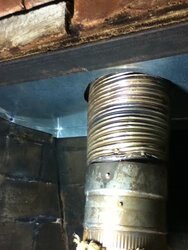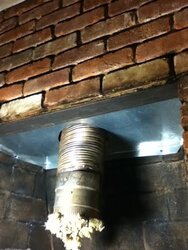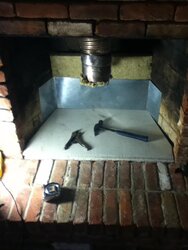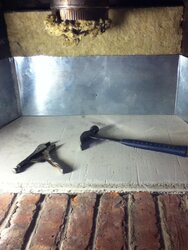So after a lot of aggravation and some harsh words with the dealer they finally showed up this afternoon and pulled my insert. After they left I started tightening up my firebox.
Once it was out I could see that although the installer was originally supposed to have insulated the damper area w/ Roxul there was very little there. He must have done a decent job up top because I get no drafts outside the liner but I added about 4 bats worth of Roxul up to about 4' above the damper, all in the smoke shelf (a lot of dead volume up there) and then above and below the damper.
Then I added a 24 ga block plate and added another layer of Roxul. This should make a bigger difference than I thought it was going to since the damper area was not nearly as well insulated as I believed it was. There was only two small pieces sitting along side the liner with open space all around. It was as good as having nothing.
It supposed to go back in on Sunday. Cross my fingers.
Once it was out I could see that although the installer was originally supposed to have insulated the damper area w/ Roxul there was very little there. He must have done a decent job up top because I get no drafts outside the liner but I added about 4 bats worth of Roxul up to about 4' above the damper, all in the smoke shelf (a lot of dead volume up there) and then above and below the damper.
Then I added a 24 ga block plate and added another layer of Roxul. This should make a bigger difference than I thought it was going to since the damper area was not nearly as well insulated as I believed it was. There was only two small pieces sitting along side the liner with open space all around. It was as good as having nothing.
It supposed to go back in on Sunday. Cross my fingers.





